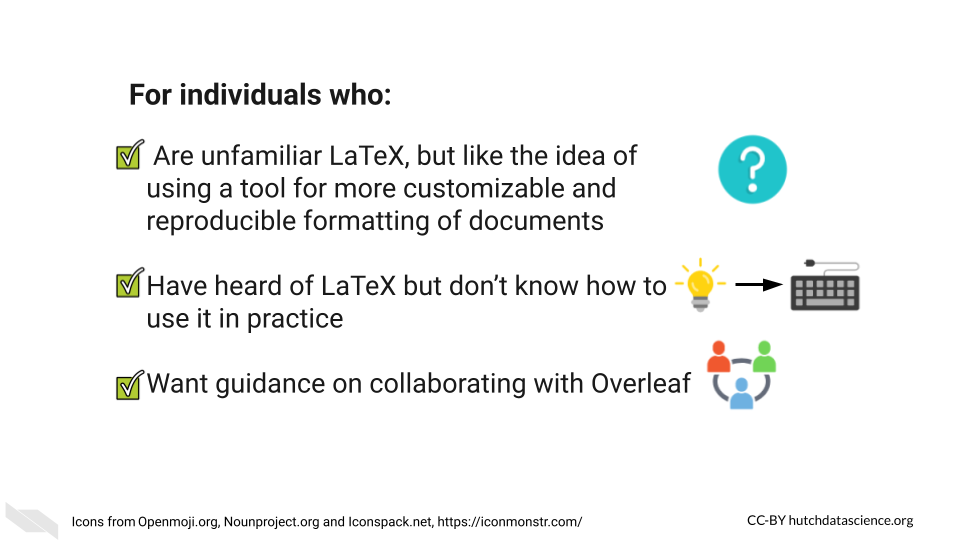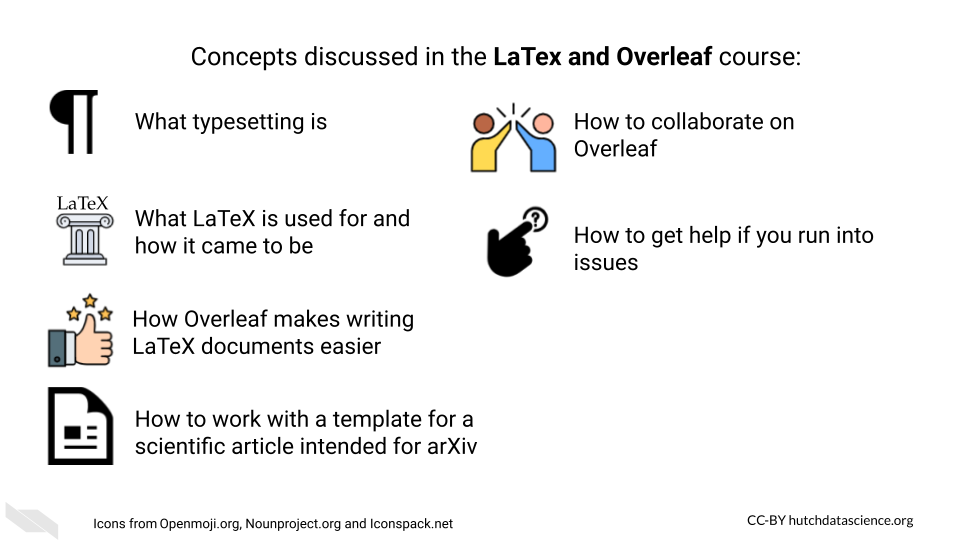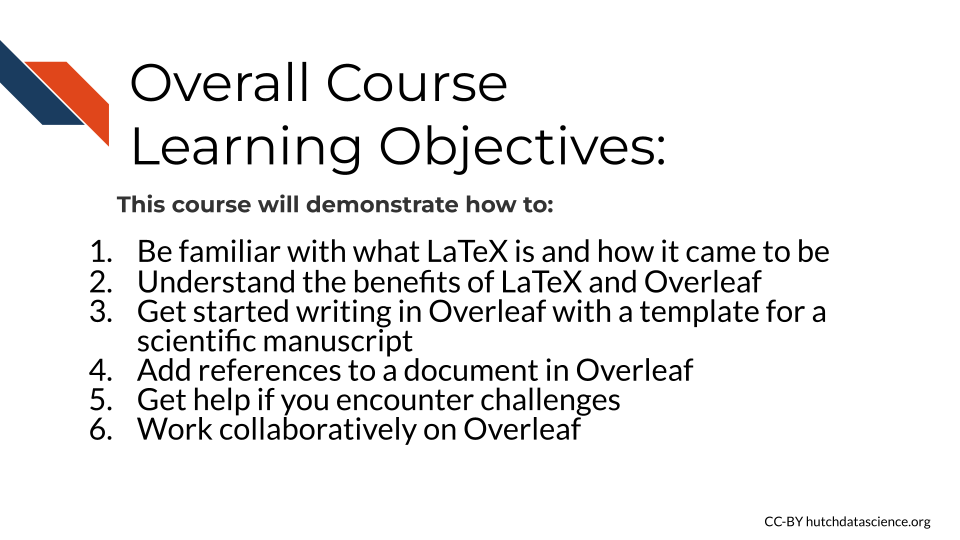
Chapter 1 Introduction
This course is meant to get you started writing scientific manuscripts using LaTeX in Overleaf.
1.1 Motivation
Overleaf is a very useful tool for collaborative scientific writing. It has an advantage over other potential collaborative writing options in that it enables for seamless changes in formatting and arrangement of text to allow you to submit to various publication platforms, such as preprint archives or scientific journals. Another advantage of Overleaf is that it is based on using LaTeX which makes it easy to add mathematical formulas to your writing. It also helps you do really complicated formatting and layouts with much more ease than other options and it makes it easy to replicate that complicated formatting/layout again for other papers or other writing products. It is widely used in certain fields like statistics and computer science. Therefore, it can also be useful to know about if you have collaborators in these fields.
1.2 Target Audience
The course is intended for scientific writers who might be interested in learning how to automate some of their writing formatting/layouts.


